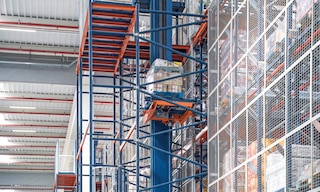
Pallet lifts and vertical conveyors in the warehouse
In a facility, a pallet lift is a device used to overcome height differences, facilitate picking tasks, unload trucks automatically, or move goods vertically within automated storage and retrieval systems (where vertical conveyors (also known as VCRs or vertical reciprocating conveyors) come into play).
In this post, we analyse the different types of pallet lifts on the market, both manual and electric, and their variants when integrated in automated storage and retrieval systems, such as vertical conveyors. Lastly, we’ll show you some examples of companies that have equipped their facilities with these systems
What is a pallet lift?
Generally speaking, a pallet lift is a logistics solution employed in multiple sectors to raise a load to the desired height. In its simplest form, a pallet lift is a tool widely used in warehouses to elevate goods a number of feet (higher than the reach of a pallet truck but lower than that of a forklift). This can be done to facilitate the loading/unloading of trucks or to improve an operator’s access to the products on a pallet.
Vertical conveyors are a more sophisticated version of the pallet lift and are used in automated storage and retrieval systems. Driven by an electric motor — just like a goods lift ― vertical conveyors are present in warehouses with conveyor systems, such as automated storage and retrieval systems. In this case, they can serve to connect different conveyor line levels, raise a pallet for another machine to pick it up and deposit it on a rack, automate truck loading and unloading, etc.
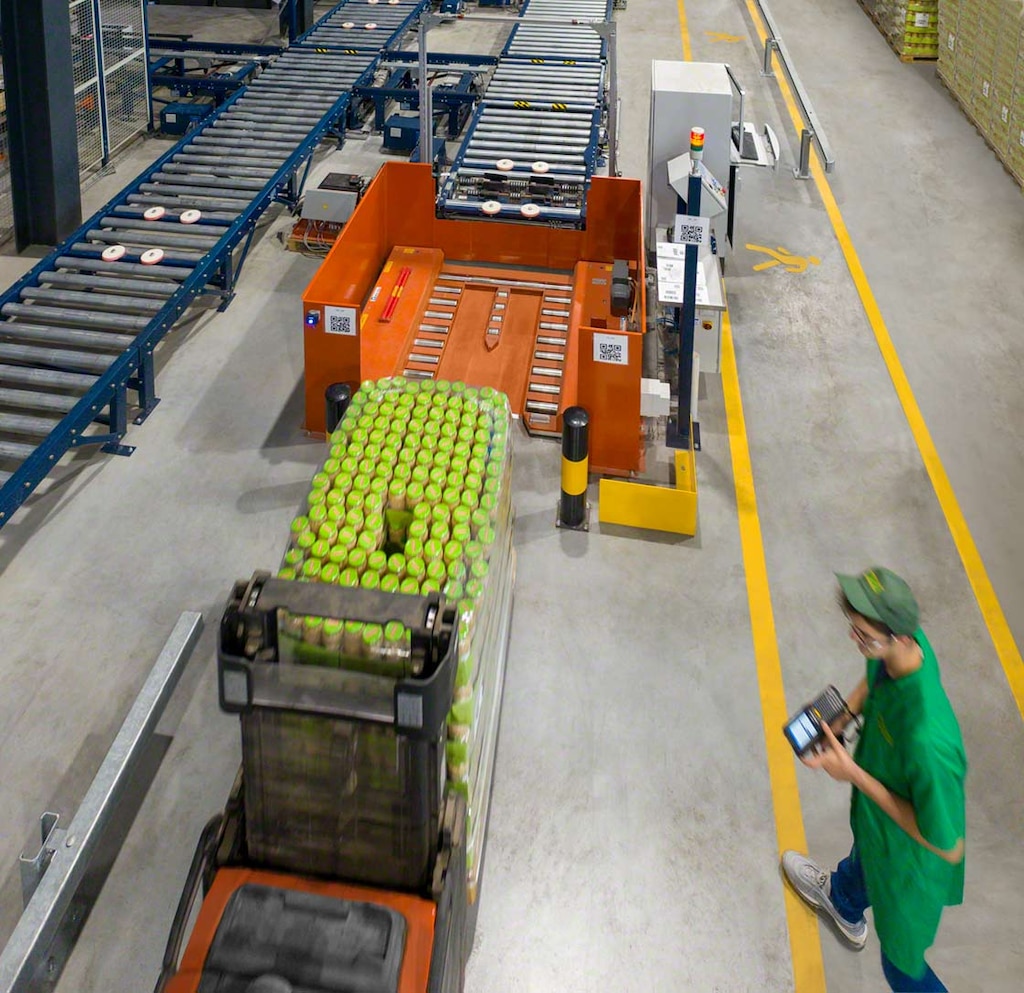
Pallet lifts in manual facilities
A manual pallet lift consists of handling equipment that picks up the pallet and raises it hydraulically by means of an oscillating movement. This makes it easier for operators to ergonomically access the load, preventing them from having to repeatedly bend over and stand up to prepare orders with palletised goods. These lifts elevate the pallet to a height of approximately 3' and enable it to be turned some 40°.
Pallet lifts can also be used to load/unload trucks, raising the goods up to a distance of 20', or to work on low-level racks. There are models that can be operated on foot (such as a pallet truck) or with a person on board, and they can be electric or manual.
Pallet lifts and vertical conveyors in automated storage and retrieval systems
Manual pallet lifts are a common solution for conventional facilities with low goods flows. Nevertheless, warehouses with large order volumes require automated systems that streamline load movements. Solutions such as hydraulic tables and vertical conveyors can be integrated in a pallet conveyor line to raise and lower the palletised goods faster and homogenise the path of the load.
Hydraulic table at the entrance to the conveyor line
A hydraulic table is a system connected to the beginning of a pallet conveyor line or a pallet checkpoint. Its purpose is to bring the load up to the height of the line so that it can be placed on the conveyor. Hydraulic tables at the entrance to conveyor lines often have integrated rollers.

Hydraulic tables within the conveyor line
Likewise, hydraulic tables can be used within the conveyor lines themselves. Roller or chain conveyors are assembled on top of the lines and tasked with overcoming slight differences in height within the line. The elevation levels of hydraulic tables vary between 4" and 80". This solution is also implemented to optimise the performance of pick stations when picking from pallets: it raises the unit load to the height of the operator so that he/she can work in an ergonomic position with improved safety and throughput.
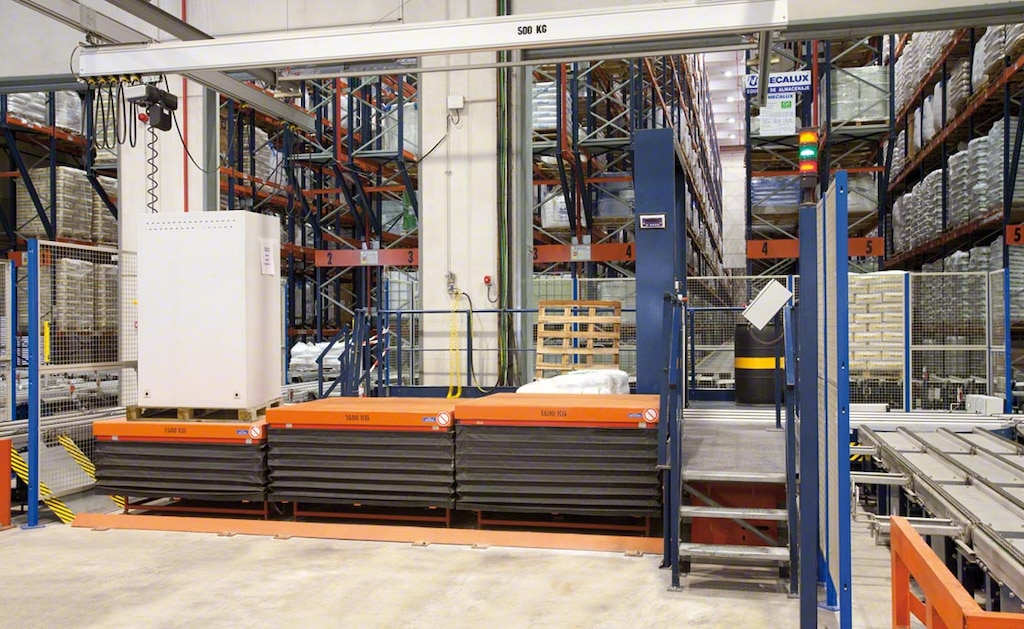
Pallet dopplers
A pallet doppler is automatic handling equipment charged with raising a loaded pallet at least 6.5" — the height of a GMA pallet — to insert a slave pallet below the palletised load. This comes especially in handy when the main pallet with the goods on top of it is defective.
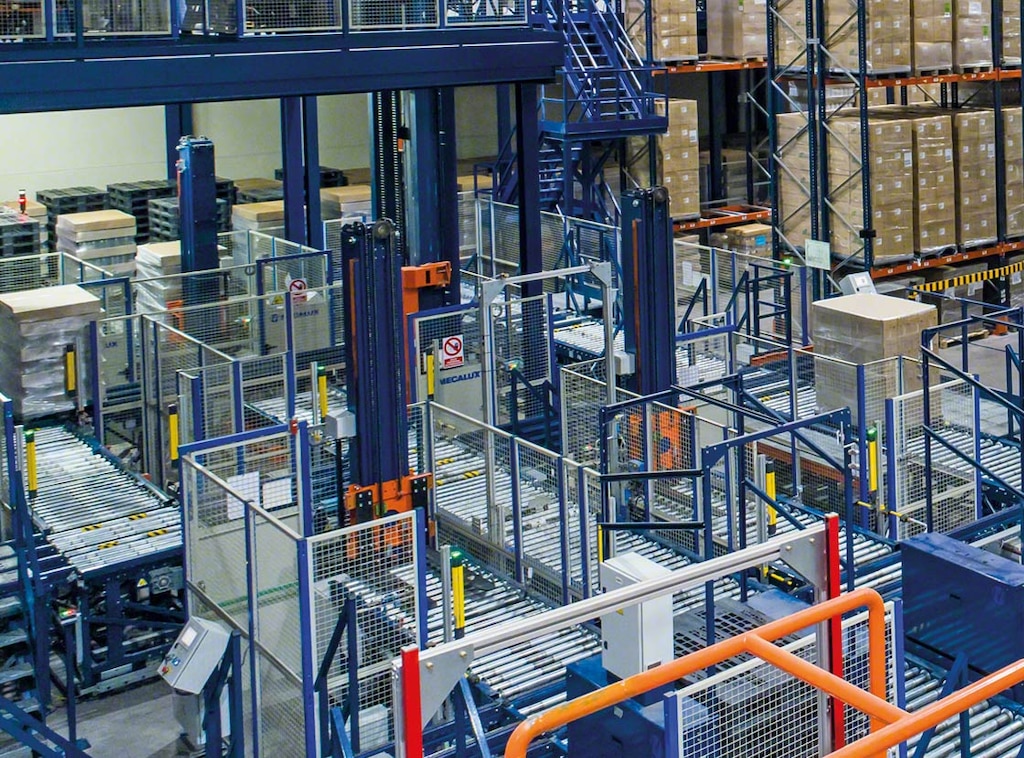
Vertical conveyors
Also known as vertical reciprocating conveyors (VCRs), vertical conveyors are systems integrated within a conveyor lines to lift a pallet a number of feet (to another floor in the facility). With this solution, which can load one or two pallets simultaneously, the vertical movement is produced by an electric motor. This type of pallet lift enables workers to reach multiple levels, from a minimum of 16.5' to a maximum of 131'.
Vertical conveyors are coordinated with the movement of the conveyors via warehouse control software (WCS). This, in turn, is supervised by the warehouse management system (WMS), which decides where each product should be placed and, thus, which path it should take to reach that location.
Vertical conveyors for pallets facilitate agile, more productive goods flows, operating at speeds of up to 3' per second and with the ability to operate at temperatures as low as -22 °F. What’s more, to avoid any kind of accident, these devices are sectioned off by safety mesh, which impedes operators from accessing the area in motion.
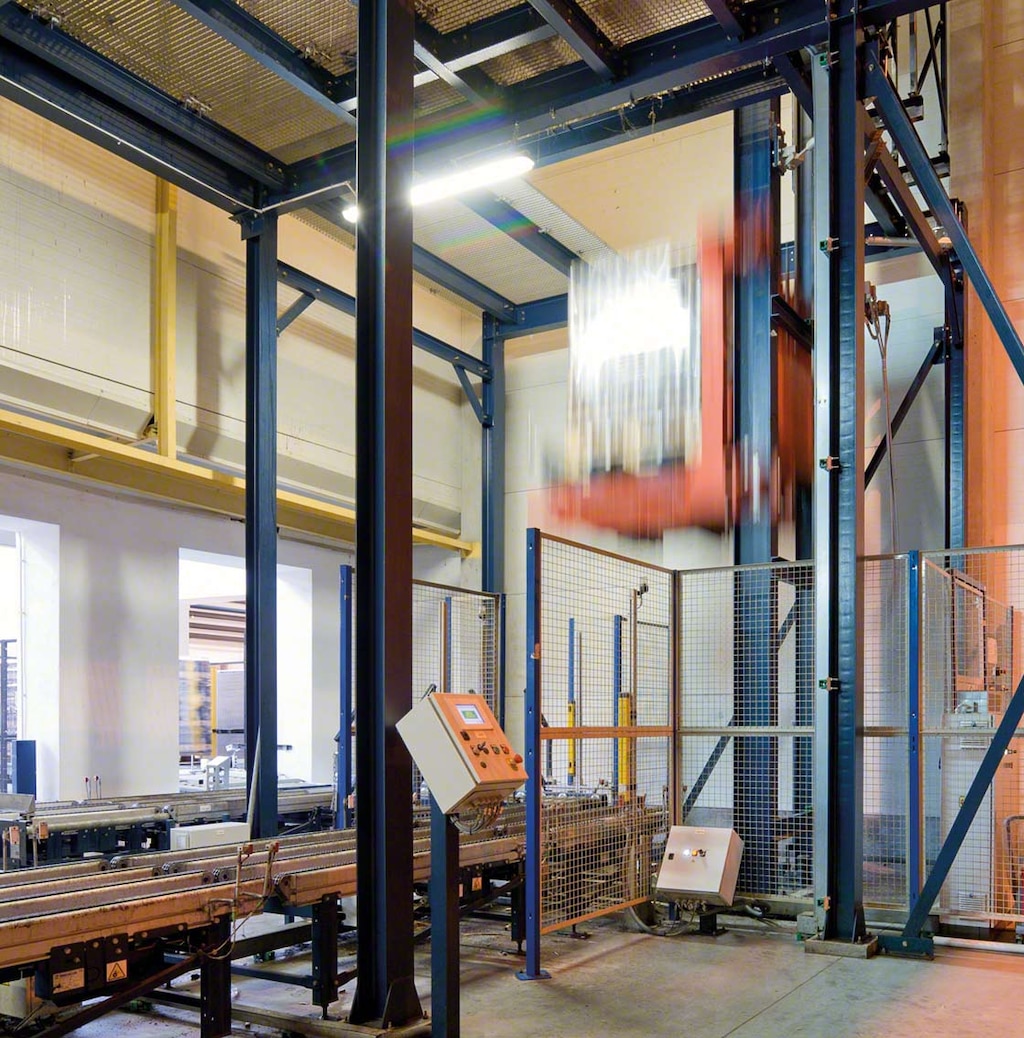
Examples of warehouses with vertical conveyors
The Mecalux Group is a global provider of intralogistics solutions. Therefore, numerous customers have relied on us to automate goods flows in their facilities. These are 3 examples of automated warehouses with vertical conveyors:
- Porcelanosa (Spain): the new facility of multinational ceramic floor and wall tile manufacturer is equipped with modern logistics solutions to speed up pallet entries and exits. In this installation, our company designed and implemented two conveyor systems in the integrated warehouse: one at ground level for pallet outflows and the other at a height of 23', where goods from the production lines enter. Five powerful lifts connect the two levels.
- Sokpol (Poland): this Polish juice producer charged our Group with designing and outfitting the two warehouses that supply its production centre. The semiautomated Pallet Shuttle system was installed in one facility to handle finished products, while the other warehouse was fully automated. On the lower floor, a conveyor system moves the pallets to two lifts. These bring the loads to the upper floor, where an overhead conveyor system is set up. Before arriving at the lifts, all pallets must go through a pallet checkpoint with a hydraulic table where the goods are manually elevated.
- Cistér (Portugal): Our Group has automated operations in the new automated facility of this multinational Portuguese food producer. Two lifts have been installed to complement the Pallet Shuttle storage system with transfer cars. This combined solution makes it possible to multiply the cycles per hour by the number of levels, ensuring maximum productivity in this facility.
Raising warehouse efficiency
Vertical conveyors for pallets streamline vertical transportation in facilities with various connected levels. This automated solution does away with the need for operators to move the load manually using handling equipment, cutting down on warehouse travel and transportation times.
In fact, this vertical transport system can be combined with other automated solutions, such as pallet conveyor systems and even pallet checkpoints with the goal of maximising productivity in the facility. If you’re interested in incorporating a vertical conveyor in your warehouse, don’t hesitate to contact us. An expert consultant will advise you on the best solution for automating your warehouse and making your processes efficient.
